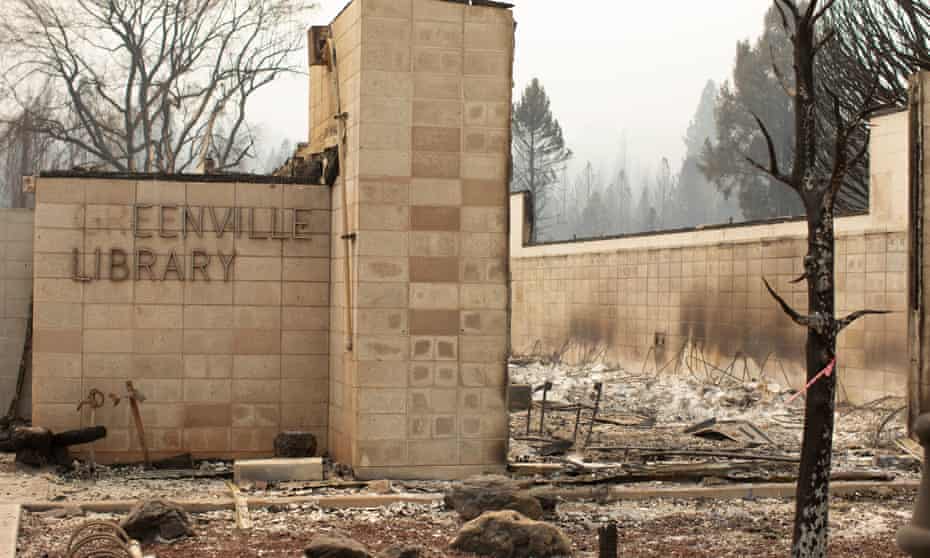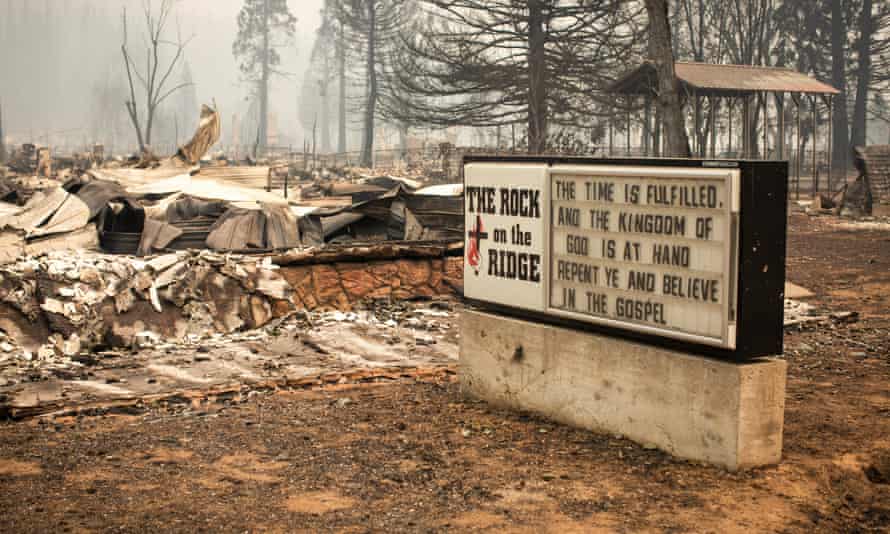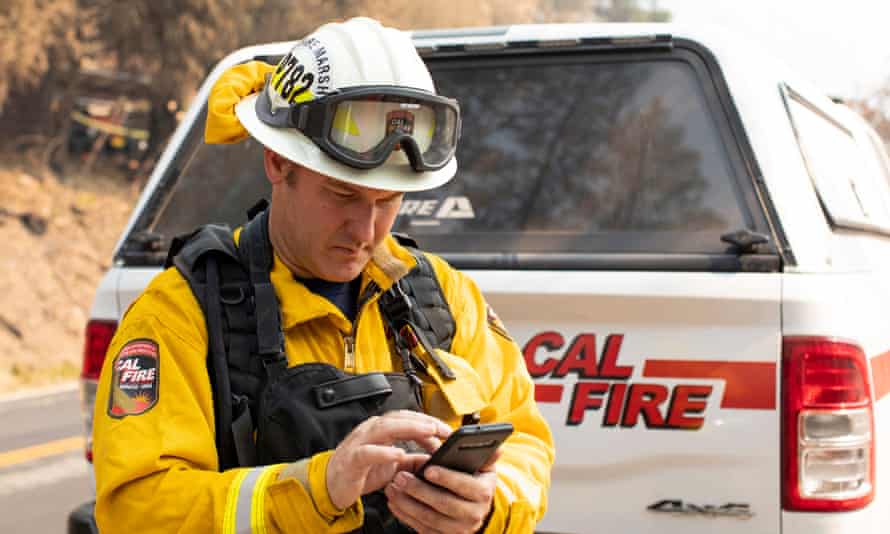The floor of what was once the Greenville library is littered with heaps of charred pages, scattered between a few remaining walls, shelves and filing cabinets. In the downtown park, blackened benches sit empty underneath spiny trees stretching into a smoke-filled sky.
Two weeks ago, the Dixie fire raged through this quaint northern California mountain town, leveling many of the brightly colored buildings, some of which had stood here through the last century.
Today, each of the buildings carries a pink ribbon, affixed to the front, wrapped through scorched fences, or tied to charred spiked trees.
The ribbons indicate the structures have been inspected and included in the grim tally of more than 1,100 structures destroyed by the largest single blaze in California history. The count continues as the fire rages on, with thousands more homes in this part of the Sierra Nevada remaining under threat.
Dixie has evaded containment with help from hot, dry winds that fueled flames through the desiccated landscape, consuming communities, cabins and campgrounds that peppered the canyons and mountainsides across four counties.
Within the wreckage left in the wake of the flames, there are important lessons to be learned. That’s why a specialist crew with California’s department of forestry and fire protection (Cal Fire) ventures into the fire footprint to inspect each and every structure – whether it is still there or not.
“We are looking at the building construction features from the roof all the way down to the ground level,” Chase Beckman, a fire captain with Cal Fire, said as he toured the perimeter of a property this weekend.
Cal Fire’s damage assessment crews perform a dual service. They document the destruction so counties and aid providers can inform and assist residents, and they search for clues among the ruins for whether California’s fire code is working. As fires in the west get worse year after year, the agency and the state fire marshal are hoping the data will give future residents of fire-prone areas a fighting chance.

Looking at charred ruins, the crews try to puzzle together what type of structure once stood on the land and what types of fire protection and construction features it had, explained Joseph Gibson, a deputy state fire marshal who partnered with Beckman on the Dixie fire.
Bedsprings and bathtubs and other household items that are typically still visible in the wreckage suggest that the building was residential. “If you have a bathtub that’s on top of the kitchen sink, that’s probably a two-story,” Gibson said. “Those are the kinds of things we look for.”
The crews also assess how badly properties are damaged: no damage, affected, minor, major, or destroyed. It’s not always a straightforward call. “If we see a house that’s gutted, from what we can see from the outside, that may still be considered destroyed even if the exterior walls are still standing,” Gibson said.
They look for window frames to identify whether the structure had single or multi-paned windows, and if the roof construction was non-combustible. They know that asphalt shingles have a fiberglass matting that’s typically visible in the destruction. They evaluate if there was defensible space – where landscaping, plants, or other things that fuel fires are set away from the building.

The department’s mission is to collect data that can be used by researchers, officials, counties and insurance companies in working to mitigate fire risks with better building codes and land-use planning. “We see a lot of success with construction modification and fuel planning,” Gibson said. “A lot of those structures survive fires.”
But many of the buildings built in the rugged mountain towns are of a different era, more vulnerable to erratic and extreme blazes like the Dixie fire.
Greenville, with its historic architecture set against sweeping views of the forest, was the hardest-hit. The devastation came as a shock. The once vibrant town now appears almost entirely black and white, its colorful visage lost to dust, smoke and ash. Blocks of debris, scorched automobile frames, and downed street lamps are layered in every direction near the town center. The roar of the flames now quiet, the crews have moved on, leaving behind a pervasive stillness and silence that lingers among the ruins.
Documenting the destruction weighs heavily on the crews, the inspectors concede, and each new trauma they catalog hits home. But they say they are heartened and hopeful that the information they collect also helps residents.

“As we were doing this, we stumbled into the fact that this data can also be used by the counties for the recovery effort,” said the team leader and fire captain, Brian Barkley, who has been with the agency for two decades and helped develop the curriculum for the program. At an interim command center for the crew on the incident in Chico, Barkley hovered over a map depicting the fire perimeter and each structure identified so far.
His teams attempt to find every single structure, which can sometimes entail miles-long hikes through rough, burned terrain. But that means that even those who reside in rural or remote areas can learn the status of their homes or businesses online long before they are allowed back in to see for themselves.
“Now what they can do is go to a local area assistance center, take their driver’s license, say they saw it on the website. The county has the information and can validate it, and then Red Cross right there can hand them a relief check,” Barkley says. “What used to take weeks or even months after a disaster we are doing in days now.”

The tools have also helped the agency more efficiently catalog the intensifying impact of wildfires that are getting stronger year after year. Of the top 15 most destructive fires in California history, 11 have occurred in the last five years. With a better understanding of the destruction, Cal Fire is hoping to gain a better understanding of what might aid the firefight in the years to come.
“It’s getting worse,” Barkley said, adding that they also now had more awareness of the toll each fire had taken. In the field, Gibson and Beckman agreed. Their experience on this side of the firefight has only added to their understanding of the growing threat posed by fire.
“It is troubling because you are seeing the devastation and wondering how we can be better,” Beckman said. He’s heartened only by the idea that the work they are doing might have a positive impact. “We don’t have the resources, the strength of our crew numbers any more,” he said of the battle against the fires.
“We want to prevent the catastrophic and there should be a direct connection between suppression and prevention,” he added. “It’s all about keeping our constituents, our communities and our firefighters safe. And we can’t do that with traditional tactics.”
